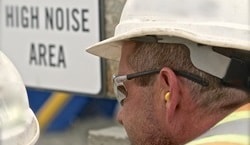Cross-sectors
The seven cross-sectors focus on the major health and safety issues affecting U.S. workers.
Cancer, Reproductive, Cardiovascular and Other Chronic Disease Prevention
Includes many types of occupational cancer, reproductive health, and cardiovascular disease as well as the evolving areas of occupational neurological and renal disease.

Hearing Loss Prevention
Focuses on prevention of occupational hearing loss due to hazardous noise exposure and ototoxic substances (chemical, pharmaceutical, metals).
Immune, Infectious and Dermal Disease Prevention
Includes the study of work-related
- Immune diseases, such as contact dermatitis, allergic rhinitis, and asthma
- Infectious disease, such as influenza, norovirus, and legionella
- Dermal diseases, which are caused by chemicals that enter the body through the skin and injure individual organs or groups of organs.

Musculoskeletal Health
Focuses on preventing musculoskeletal disorders, which are soft-tissue injuries caused by sudden or sustained exposure to repetitive motion, force, vibration, or awkward positions.
Respiratory Health
Addresses the harmful effects of hazardous respiratory exposures, focusing on:
- lower airways diseases (e.g., asthma, chronic obstructive lung disease);
- upper airways diseases (e.g., rhinosinusitis);
- interstitial lung diseases (e.g., coal workers’ pneumoconiosis, asbestosis, silicosis);
- respiratory infectious diseases (e.g., tuberculosis, influenza, anthrax, emerging infectious diseases);
- respiratory tract and pleural malignancies (e.g., lung cancer, mesothelioma); and
- emerging exposures and related diseases (e.g., engineered nanomaterials, World Trade Center dust, flavoring chemicals).
Traumatic Injury Prevention
Focuses on preventing injuries and related deaths to workers due to sudden events such as falls, motor vehicle crashes, violence, and being caught in or struck by machinery.

Healthy Work Design and Well-Being
Seeks to improve the design of work, work environments, and management practices in order to advance worker safety, health, and well-being. Within the healthy work design framework, worker well-being encompasses positive physical, emotional, mental, and economic health. It also includes how these aspects of health relate to work and worker experiences from a comprehensive and holistic perspective.
More information about NIOSH’s work in each cross-sector can be accessed through the NIOSH Program Portfolio page.